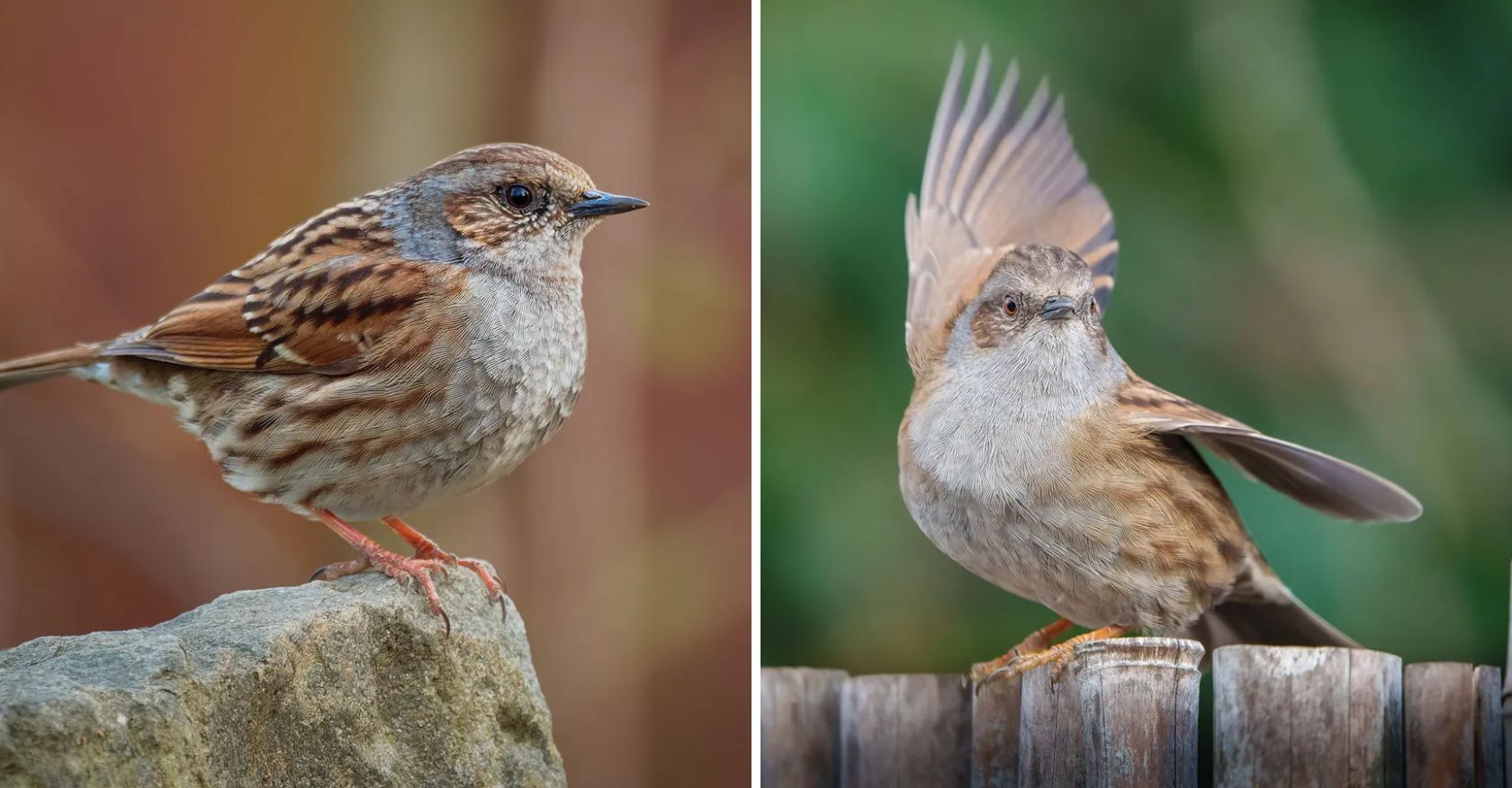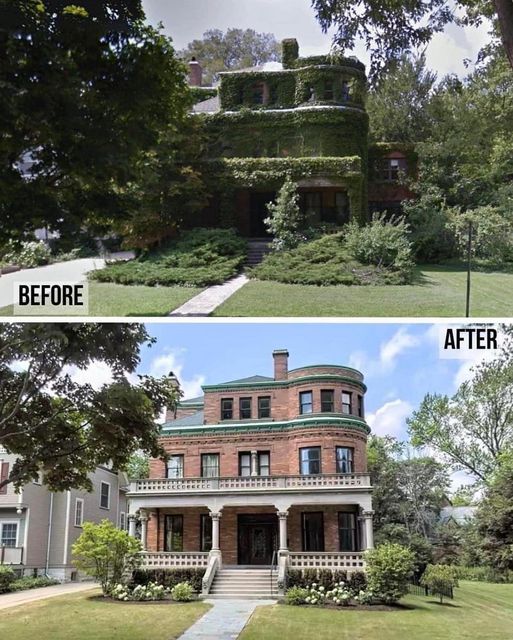A relatively nondescript and unobtrusive species, the Dunnock is a common bird with a fascinating breeding strategy.
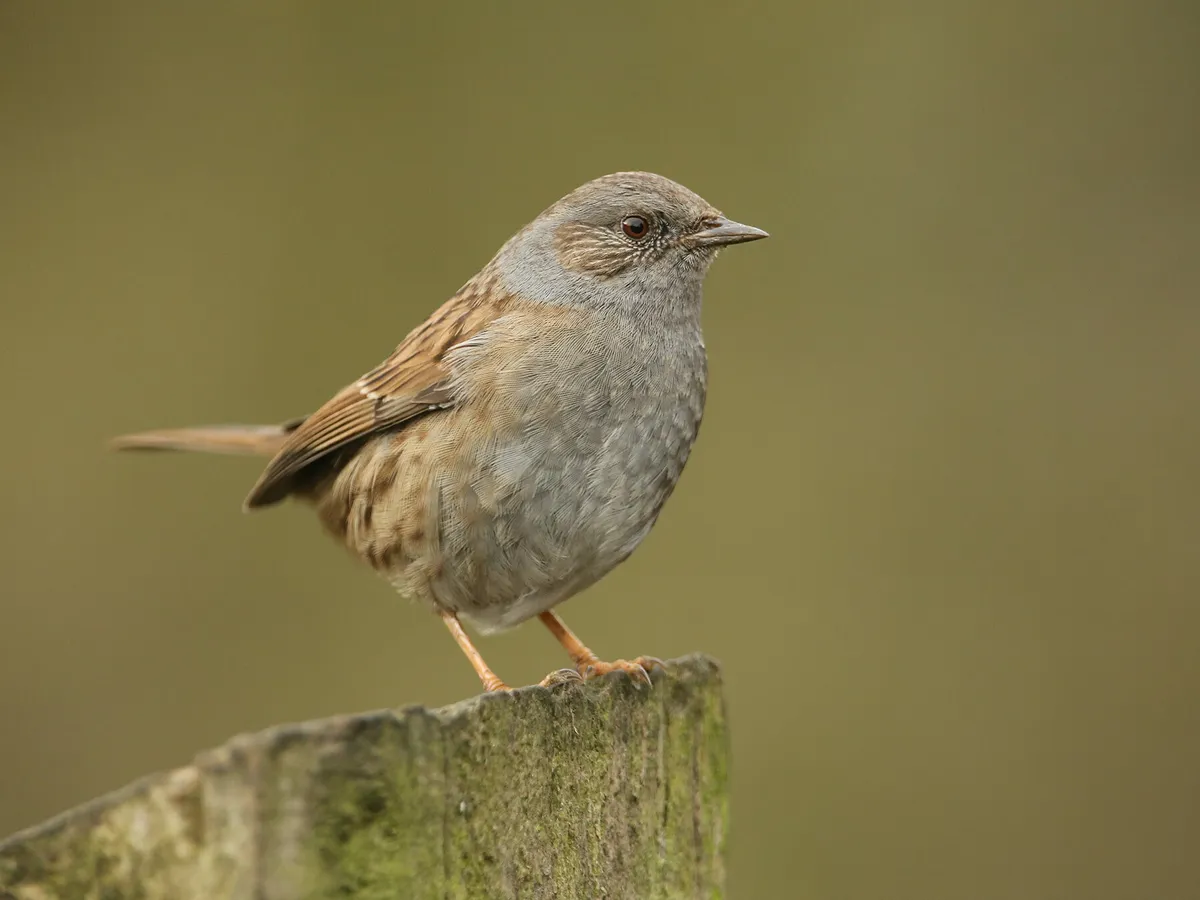
Appearance & Identification
The Dunnock is a sparrow-like bird with a thin bill and a habit of flicking its wings. Continue reading for more Dunnock identification tips.
What do Dunnocks look like?
Dunnocks have grey and brown plumage that blends in well with their environment. They have grey underparts and faces with black and brown mottling on the back, wings, and flanks. Their legs are reddish, and their sharp, slender bills are black. A mottled brown patch covers the side of the face, surrounding a red-brown eye.
Female Dunnocks resemble males but generally have less distinct markings, particularly on the upper back.
Juveniles are more heavily streaked than adults. They also lack the uniform grey plumage that surrounds the face and covers the throat and chest of adult birds.
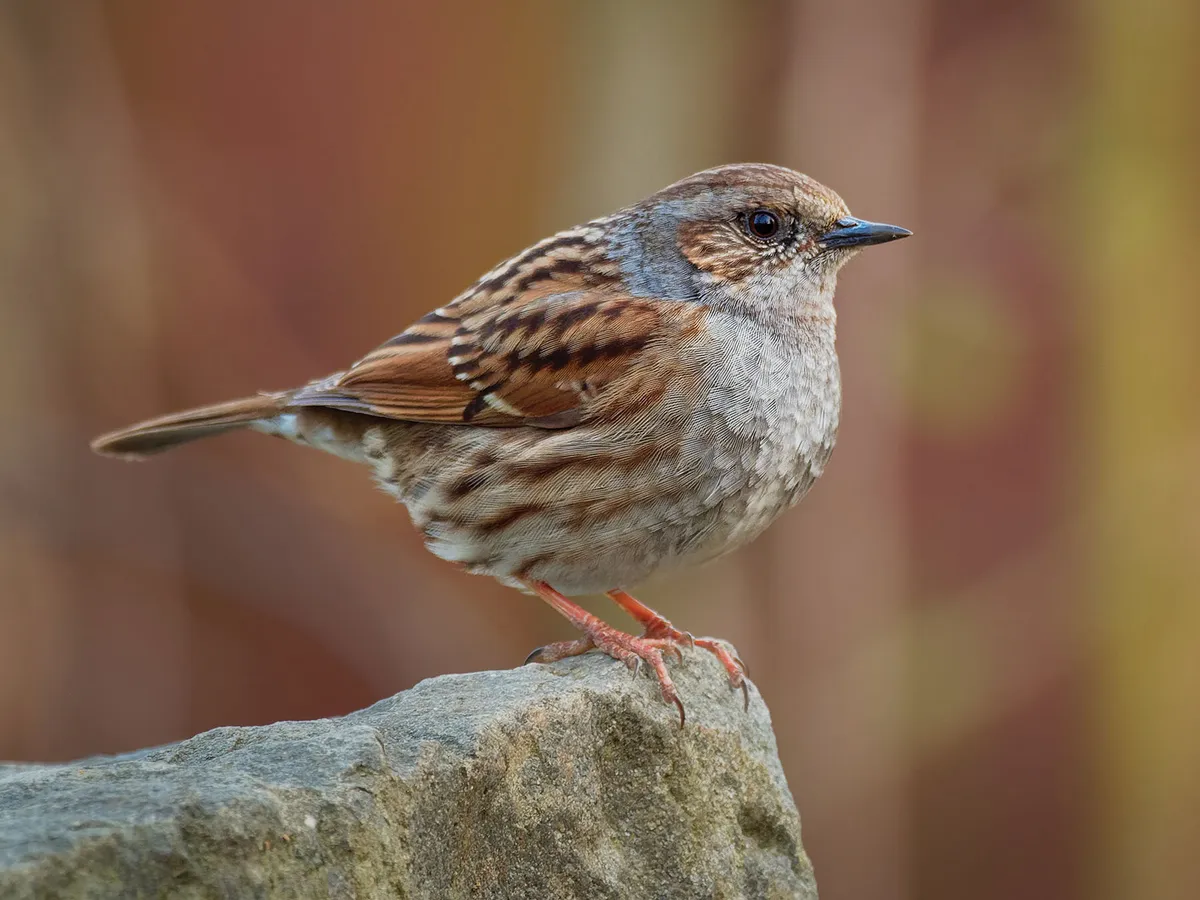
Close up of a perched Dunnock
How big are Dunnocks?
The Dunnock is a small songbird, very similar in size to the Robin.
Length
Most Dunnocks have a body length of about 14 centimetres.
Weight
They weigh between 19 and 24 grams.
Wingspan
Dunnocks have a wingspan of 19 to 21 centimetres.
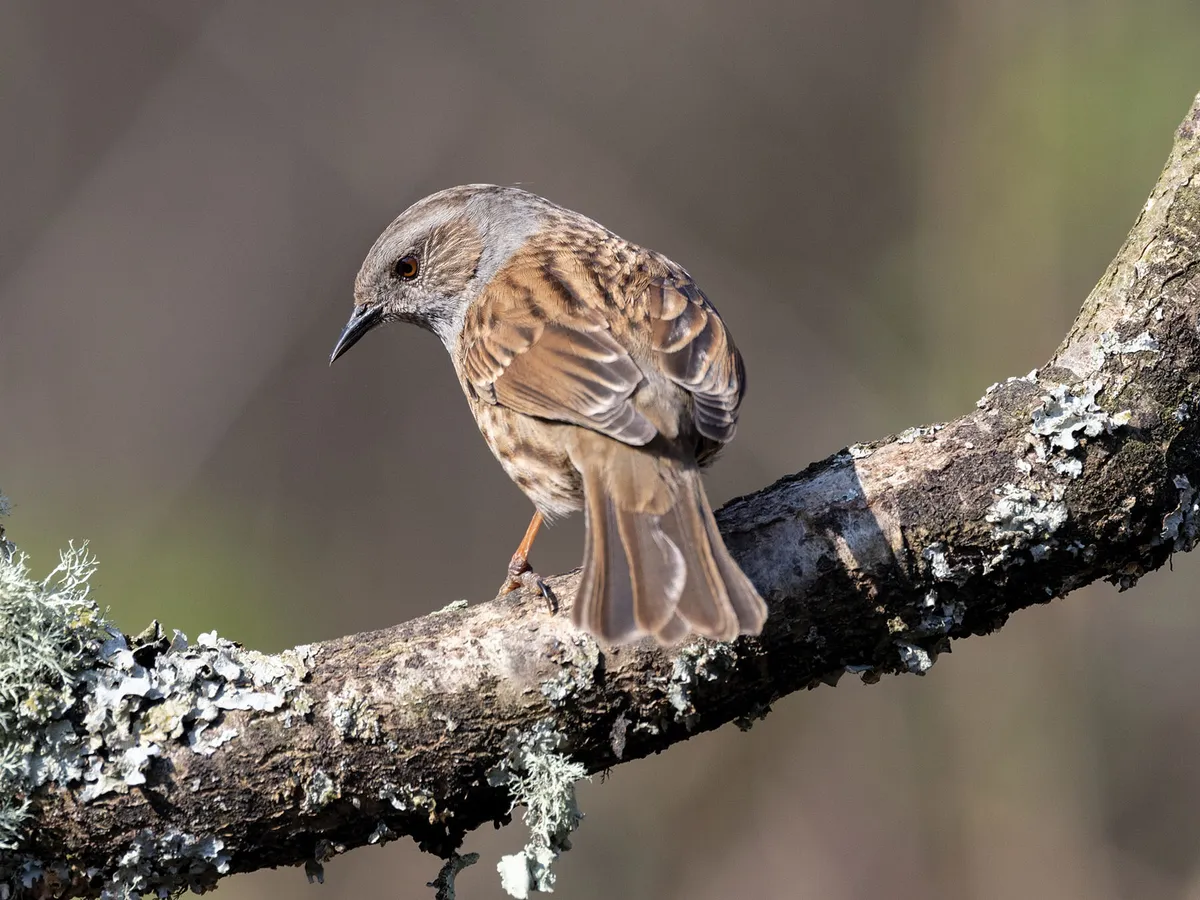
Dunnock perched on a branch
Calls & Sounds
Listening out for the Dunnock’s song is a great way to detect these otherwise unobtrusive birds.
What sound does a Dunnock make?
Male Dunnocks produce a high-pitched warbling song from a perch or in flight. Their song is used both for attracting a female partner and deterring male rivals. These birds also produce a familiar ‘seep’ call to maintain contact.
Diet
These birds are often seen foraging on the ground, sometimes below garden bird feeders. Continue reading to learn about the Dunnock’s diet.
What do Dunnocks eat?
Dunnocks are omnivorous birds. Insects and other invertebrates dominate their diet in the warmer months, but seeds become increasingly important in the winter. They eat various seeds and invertebrates, generally picked off the ground or between fallen leaves and debris.
Check out our full guide on what Dunnocks eat.
What do Dunnock chicks eat?
Dunnock chicks are fed primarily on insects, although they also receive regurgitated seeds.
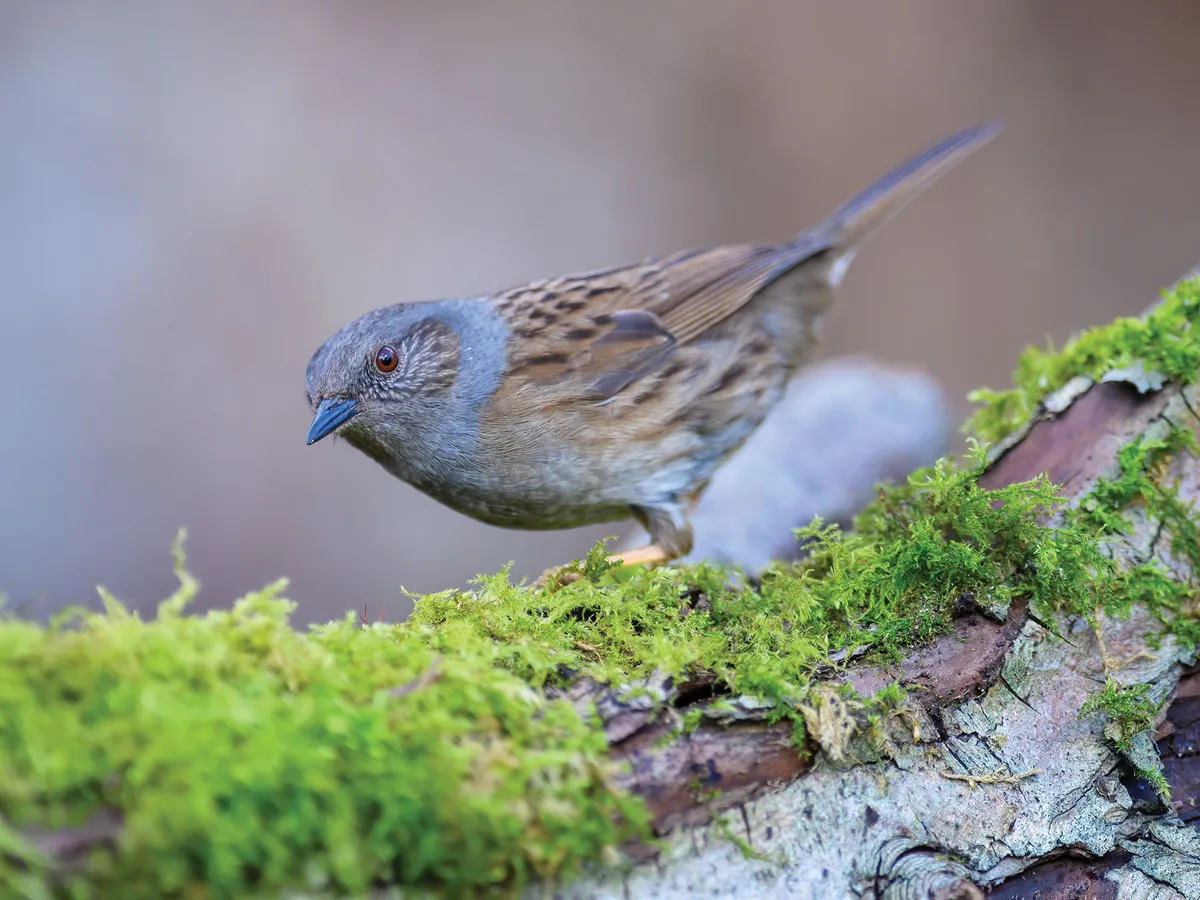
Dunnock searching for food in the woods
Habitat & Distribution
The Dunnock is a widespread species in Western Europe and the only member of its family to inhabit low-altitude habitats.
What is the habitat of a Dunnock?
Dunnocks are not particularly fussy about habitats, provided they have access to cover in the form of scrub, hedgerows, or other bushy vegetation. Look for them in woodlands, parks, gardens, and any natural vegetation surrounding farmland.
What is the range of a Dunnock?
Dunnocks occur throughout the United Kingdom, except for some high-lying parts of Scotland. They are also widespread in the Republic of Ireland and most of mainland Europe. Their breeding range extends into Western Asia, and some visit North Africa in the Non-breeding season.
Dunnocks were brought to New Zealand in the mid to late 1800s. The introduction was successful, and they are still common there today.
Where do Dunnocks live?
Dunnocks spend much of their time in low vegetation or down on the ground. They forage in the undergrowth, beneath the canopy of shrubs and hedges or along the margins of dense vegetation.

Dunnock in its natural habitat
How rare are Dunnocks?
Dunnocks are very common birds in the United Kingdom, despite having declined by over a third since the 1960s.
Where can you see Dunnocks in the UK?
Birdwatchers can spot Dunnocks virtually anywhere in the UK. They are common garden birds, so there’s a high likelihood of spotting these birds near your home. They are most numerous in the low-lying areas of England but are worth looking for wherever suitable habitat occurs.
Signs and spotting tips
The dunnock is unobtrusive for much of the year, creeping along close to the ground, twitching its wings and tail nervously. It has jerky, light and springing flight. The dunnock often perches in view when singing, favouring the tips of young spruce, but otherwise generally remains hidden. It will dive into cover at the slightest disturbance.
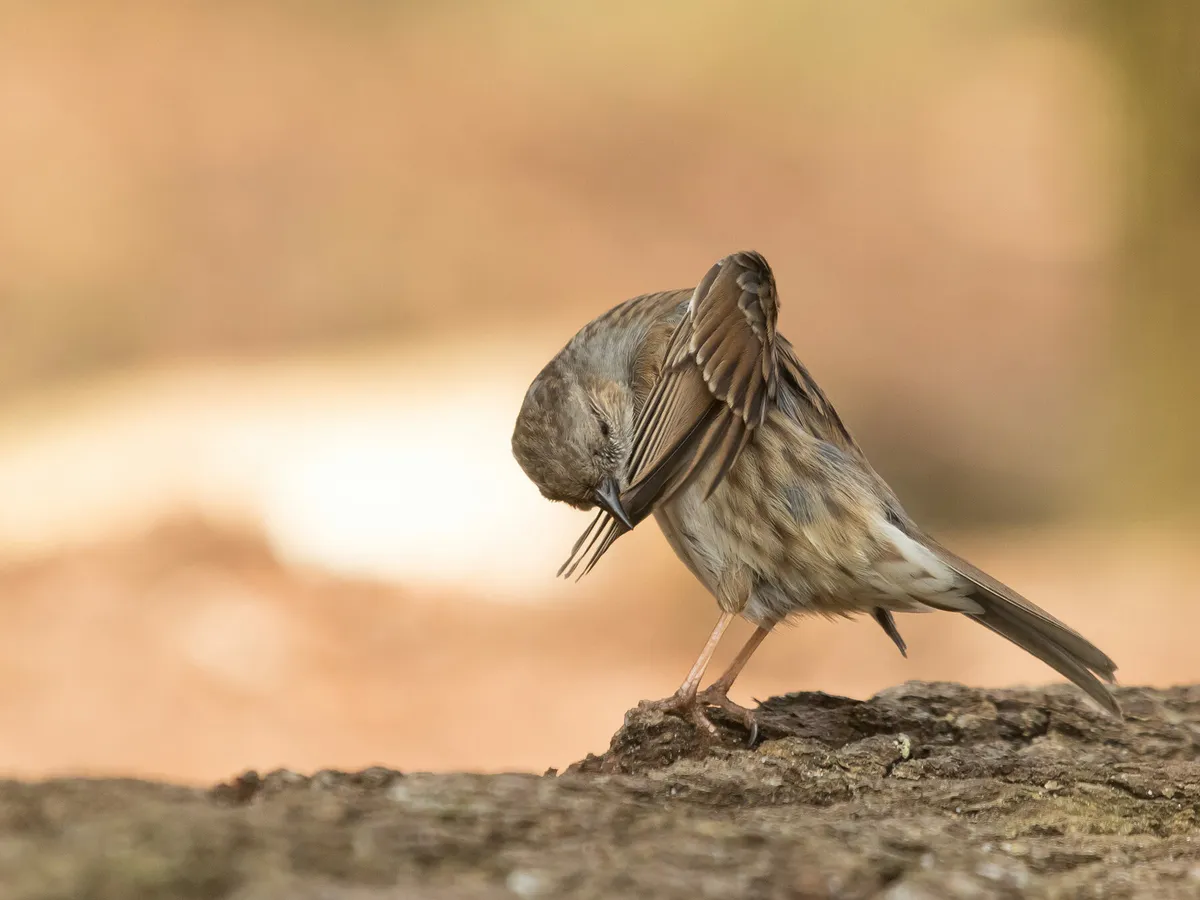
Dunnock preening its feathers
Lifespan & Predation
Dunnocks face many threats, resulting in a relatively short lifespan.
How long do Dunnocks live?
Dunnocks have an average lifespan of just two years, although they may live for over a decade in some cases.
What are the predators of Dunnocks?
The Sparrowhawk and the domestic cat are common Dunnock predators. These small birds are also vulnerable to various mammalian and avian carnivores, and their nests may be raided by other birds like Magpies.
Are Dunnocks protected?
Dunnocks are protected by the Wildlife and Countryside Act 1981 in the United Kingdom.
Are Dunnocks endangered?
Dunnocks have an amber conservation status in the UK due to significant declines over the past fifty years. However, they are not officially endangered. These birds are listed as a ‘Least Concern’ species by the International Union for Conservation of Nature.
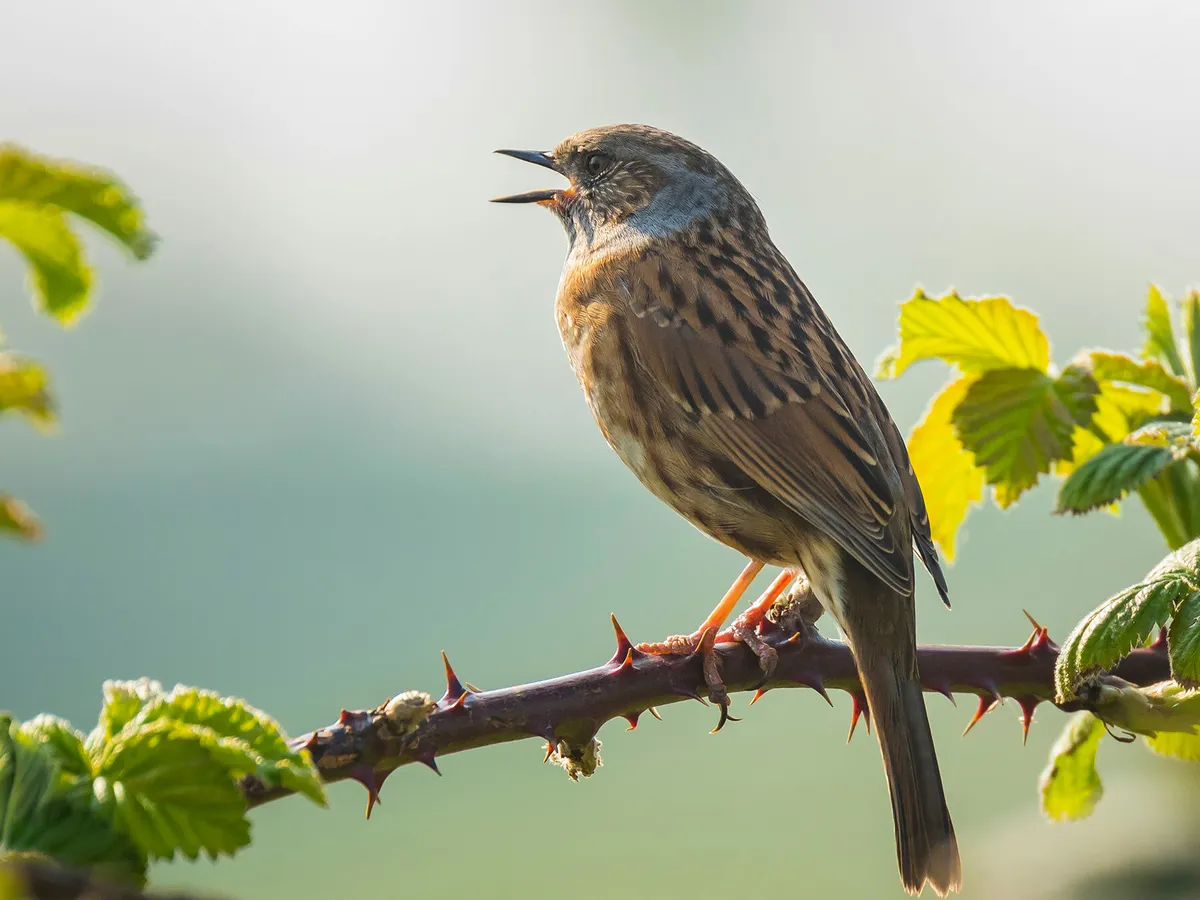
Perched Dunnock singing from a branch
Nesting & Breeding
The Dunnock has a fascinating breeding strategy. These birds may form traditional male/female pairs or partnerships that include multiple individuals. Continue reading to learn more about their nests and eggs.
Where do Dunnocks nest?
Dunnocks build their nests well above the ground (up to 3.5m) in shrubs, hedges, and trees. The nest is a sturdy cup of twigs and other plant material lined with warm insulating materials like wool.
What do Dunnock eggs look like?
Dunnocks usually lay four or five eggs, each measuring approximately 19 millimetres long and 14 millimetres wide. Their eggs are pale blue and glossy.
Do Dunnocks mate for life?
Dunnocks do not mate for life. In fact, these birds are rather promiscuous and often mate with several partners. A male may mate with more than one female and vice versa. Interestingly, this complicated mating strategy may result in more than two adults caring for the chicks.
Would you like to learn more about their breeding habits? Read this in-depth guide to Dunnock nesting for more fascinating facts.

Dunnock gathering materials to build a nest
Behaviour
Dunnocks are fairly shy birds, most often seen as they forage quietly below vegetation. However, these birds have some remarkable breeding behaviours.
Are Dunnocks aggressive?
Dunnocks can behave aggressively towards each other during the breeding season. In polyandrous partnerships (more than one male), a dominant male attempts to defend the female from his competitor.
However, the female Dunnock has other ideas and will mate with the subordinate male when possible.
Migration
Do Dunnocks migrate?
Dunnocks do not migrate in the United Kingdom, where local birdwatchers can enjoy sightings throughout the year. However, populations that breed in Eastern Europe and Western Asia migrate south in the non-breeding season.
Are Dunnocks native to the UK?
Dunnocks are native to the United Kingdom.

Dunnock perched on a fence

